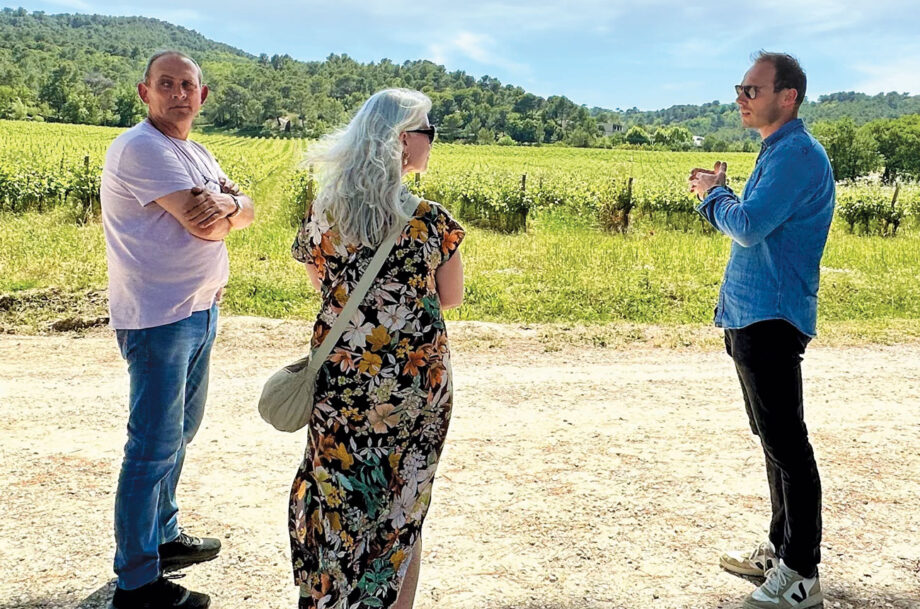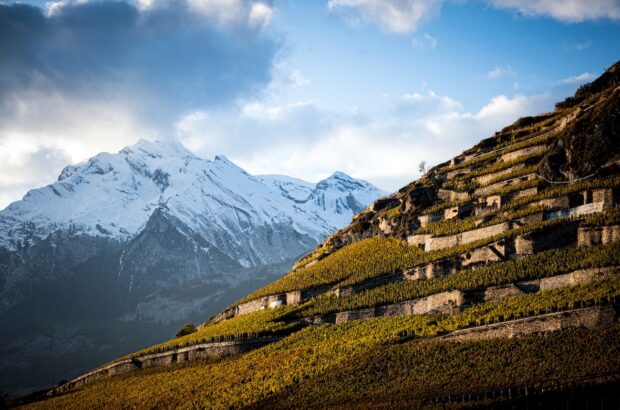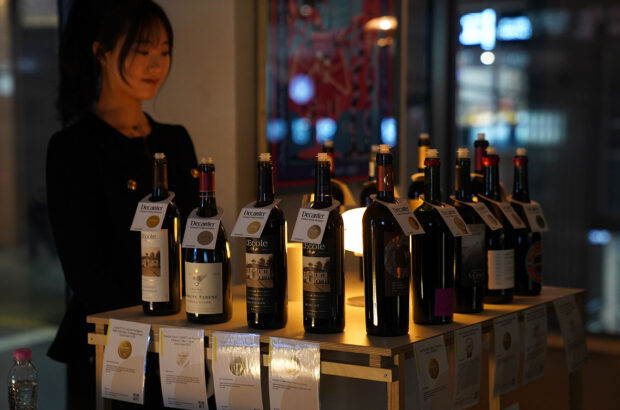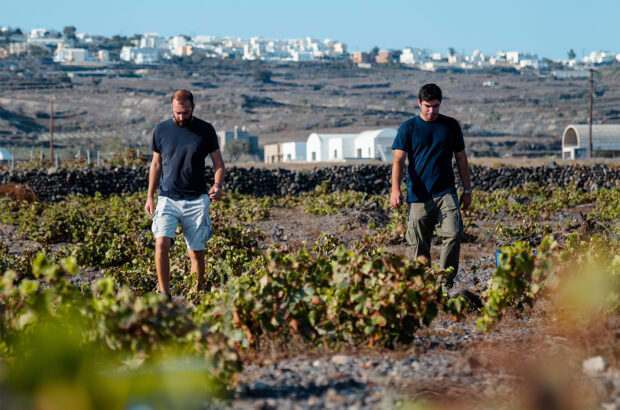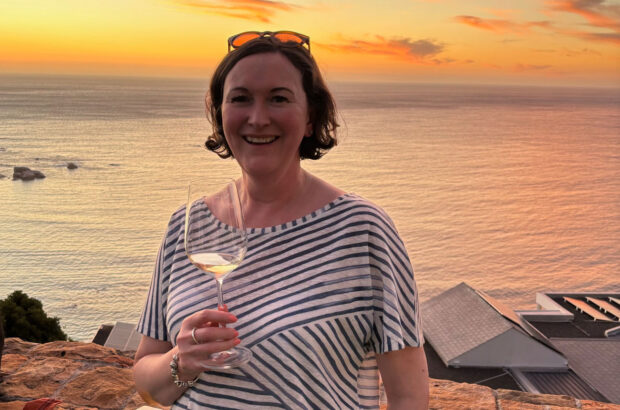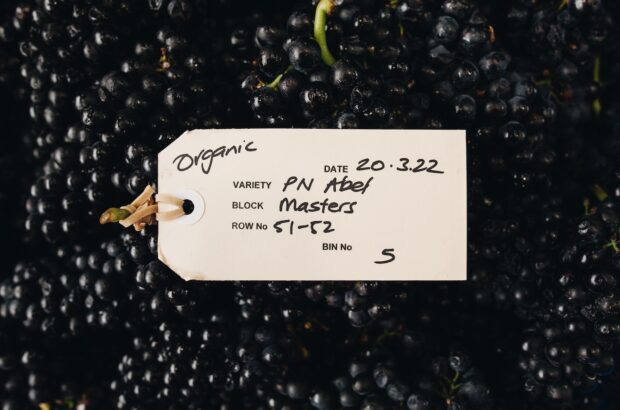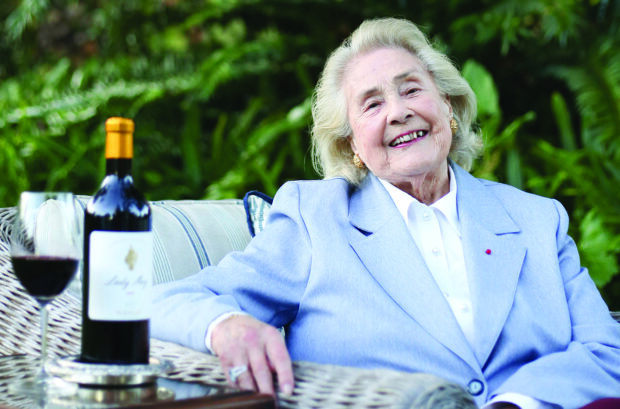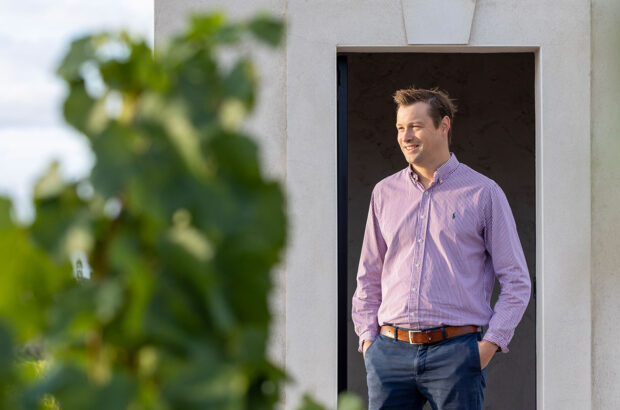Rest, relaxation and rosé
Tina Gellie
Working in the wine industry means you relish a busman’s holiday – particularly when the late-spring weather is glorious and you’re in Aix en-Provence. Château La Coste, a 20-minute drive away, in the commune of Le Puy-Sainte-Réparade, isn’t a winery to just pop into for a quick cellar-door purchase – you’ll want to spend the whole day (or longer; you can stay in one of its two properties).
I needed more than the two hours I’d set aside to stroll the extensive grounds, past more than 40 works by artists and architects including Damien Hirst, Bob Dylan, Frank Gehry and Renzo Piano. So I was late for lunch at La Terrasse, one of six restaurants on the estate, and had to rush to meet up with La Coste’s winemaker of 40 years Raymond Gimenez and vineyard manager Guillaume Vidal.
With more than 200ha under vine, La Coste is one of the largest biodynamic estates in France, Demeter-certified from the 2022 vintage. The 2024 rosé (old-vine Grenache, Syrah and Cinsault plus a dash of young-vine Cabernet Sauvignon; £25-£32 Hard to Find Wines, The Wine Reserve, Threshers, Vinvm) – the estate’s flagship, comprising 45% of production – is an ideal food wine, with a mouthwatering saline streak over peach, melon and fennel flavours.
Don’t miss the ultimate wine experience – book your tickets now for the Decanter Fine Wine Encounter London 2025
The Bordelais Champenois
Natalie Earl
The Rothschild name carries an air of prestige. So it’s surprising that Champagne Barons de Rothschild has flown under the radar for the past 20 years. It was founded from scratch in 2005. The three branches of the Rothschild family (Philippe Sereys de Rothschild of Château Mouton Rothschild, Ariane de Rothschild of Edmond de Rothschild Heritage, owner of Château Clarke, and Saskia de Rothschild of Château Lafite Rothschild) sought a joint venture, with Champagne being a notable absence in their collective portfolio.
The Bordelais didn’t barge into this insular region, guns blazing, but suspicions were still raised among the Champenois over the venture’s seriousness. So how did they win them over? By acknowledging their unfamiliarity with Champagne’s terroir and surrounding themselves with local expertise.
Avize-born Guillaume Lété joined in 2011, becoming cellar master in 2016, aged 27. He has grown alongside the house, experimenting with oak and refining which terroirs to use and how to manage the reserve wines. While the Rothschild name undoubtedly aided market entry and sales, cross-regional respect, human connections, collaboration and continuous learning have enabled the house to establish itself as an exciting addition to the landscape, with a young palate at the helm.
Summer delights from Central & Eastern Europe
Sylvia Wu

The CEE Wine Fair 2.0 was held at St John’s church in Waterloo, London. Credit: CEE Wine Fair
Now in its second edition, the CEE Wine Fair in London this year brought an eye-opening line-up of more than 100 producers ‘from the Danube to the Black Sea’ – many of them offering delightful choices perfect for summer. From cool-climate Poland, the floral and juicy 2024 rosé made from Roesler (of Austrian origin) by Winnica Pałac Mała Wieś was an effortlessly likeable picnic charmer. Winnica Płochockich’s Qvevri 2019, an orange wine blending Seyval Blanc and Traminer, offered an enticing nose of florals and dried yellow fruits, followed by a saline, structured palate.
From Serbia’s Tri Morava region, Podrum Pevac presented a ripe, creamy summer rosé (or roze in Serbian) crafted with the nation’s signature red grape Prokupac. Its Izazov 2023 Tamjanika (aka Muscat Blanc à Petits Grains) was perfumed with herbal freshness. And how about a Romanian sparkler? Carastelec’s Carassia Blanc de Blancs Brut NV (£26.50 Amathus Drinks) enchanted with toasty white peach notes and a crisp palate. Finally, there was the amphora-aged Malvazija Sur Lie 2020 (£29.99 Novel Wines) from Pilato, on the azure west coast of the Istrian peninsula. It shone with a honeyed, ginger-spiced palate and a textured, creamy depth.
Massolino’s Vigna Rionda – a single-vineyard deep dive
James Button
‘A look at the particular that will help to explain the general’ is how David Gleave MW (founder of UK importer Liberty Wines) introduced a vertical tasting (1996-2017) of Massolino’s Vigna Rionda Barolo Riserva with Franco Massolino. One of Barolo’s most celebrated MGAs (menzione geografica aggiuntiva – a bit like the French lieu-dit concept, this is a specific vineyard area recognised for particular qualities), Vignarionda occupies part of a hillside in Serralunga d’Alba where Massolino owns 3ha of vines. The Massolino family purchased its first plot there back in 1956. Today it focuses on producing balanced wines of elegance and complexity from this vineyard area, limiting punch-downs during fermentation to moderate tannin extraction, and ageing in large Slavonian and Austrian oak barrels.
There were many highlights, but for me, the 2000 (a hotter year; exotic perfume, floral, soft with vibrant cherry and blackberry fruit, and great freshness) and the 2010 (a fine, balanced vintage; intense, vertical and sapid with ripe black cherry and raspberry, structural and so fresh) impressed the most. The 2016 (£259 Berry Bros & Rudd) – with a one-off black label to mark the fact that the estate considers it a vintage of extraordinary quality – will also be worth the wait. And don’t miss the entry-level Barbaresco (2021, £44 Berry Bros & Rudd) and Barolo (2020, £48-£60 Banstead Vintners, Berry Bros & Rudd, George Hill, Laithwaites, NY Wines, Shelved Wine, The Cellarhand); they’re both wonderfully balanced, much more affordable and incredibly easy to drink.
Pere Ventura, I am
Amy Wislocki
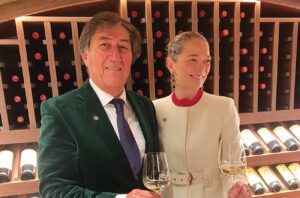
Pere Ventura with his wife Mireia Juvé
Pere Ventura, of the eponymous Cava producer, has the coolest business card I’ve seen. Pere Ventura at the top and underneath: ‘I am’. You might expect to find a big ego behind such a card, but far from it. Despite years of experience, working for Codorníu before he left to establish his own company in 1991, Pere is a modest man, and a recent tasting he hosted in London of wines going back to 2010 was the first time he had invited the UK press to meet him. He’s clearly a thinker, and sets high standards for himself. ‘If you give a company your own name, you have a responsibility,’ he says.
The chequerboard branding design reminds him that he’s constantly challenging himself. ‘I’m not concerned about what my competitors are doing; it’s about striving to achieve my own goals, to do better.’ Tasting highlights included the Pere Ventura, Gran Vintage 2016, a blend of Macabeo and Xarel.lo, peachy, floral and fragrant with frangipane and warm citrus notes, unmistakably Cava; and Vintage 2017 (£41 The Great Wine Co), a blend of Xarel.lo and Chardonnay, smoky and nutty with firm apple fruit, texture and autolytic depth.


